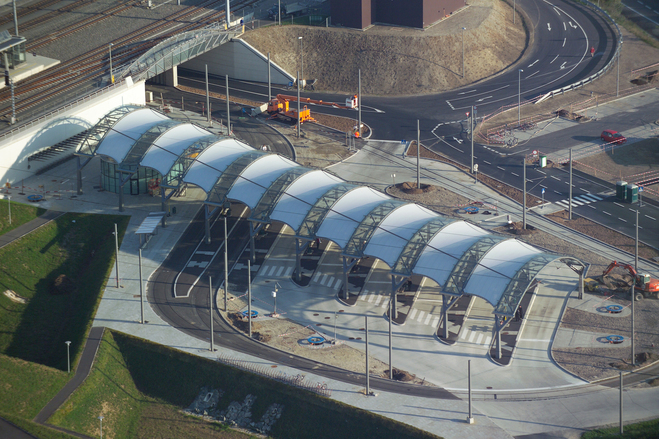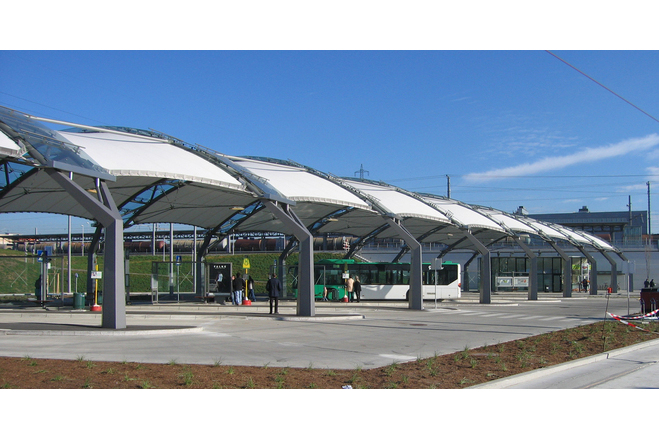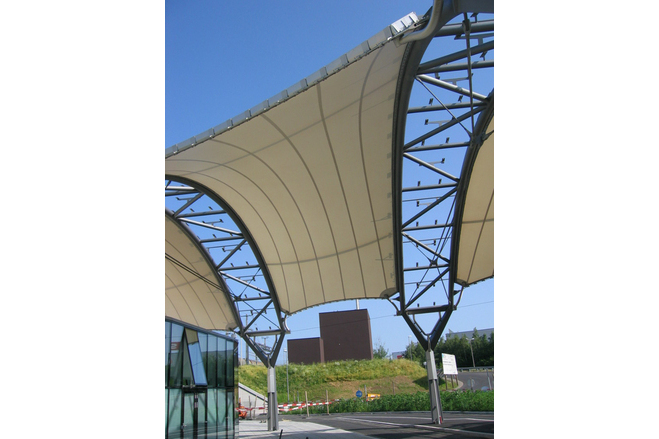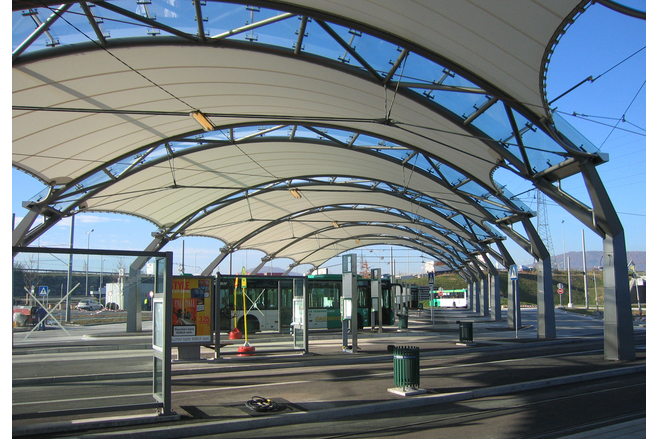Local traffic junction Puntigam
General information
-
Home page
www.form-tl.de
-
Location address
Graz
-
Location country
Austria
-
Name of the client/building owner
Grazer Stadtwerke AG
-
Function of building
Vehicle services
-
Degree of enclosure
Open structure
-
Climatic zone
Temperate - cold winters and mild summers
-
Type of application of the membrane
covering
Description
Currently, the Koralmbahn is the biggest project for the extension of the Austrian railroad network. This particular project makes a direct connection between Graz and Klagenfurt possible, and this for the very first time. In this context, the local public transport junction Puntigam was also re-designed completely.
The new local traffic junction Puntigam in Graz consists of two double stops with a reversal track loop for the tram, as well as six bus stops. The aim was to achieve a place with an own distinctive identity, by the use of a reduced but memorable design.
Form TL was responsible for the membrane design. CENO TEC GmbH provided the pre-assembled PTFE membrane fields, the flat connector blocks and secondary steel structure, the edge and snow ropes, and eventually did the full assembly.
The stops are covered by membrane and glass on a steel structure. The shape results from the position of the bus stops within the reversal track loop for the tram, and the related traffic conditions.
The bus station consists of lightweight steel arches with a span of about 21.60 m. The distance between the arches is 8.50 m. The roof is covered by a Teflon-coated glass fibre fabric membrane.
In order to make the construction even more appealing, the steel arches are equipped with additional structural glass elements.
In total, an area of 1 400 m² has now been covered, providing travellers with a comfortable location for changing between rail transport, buses and trams.
A total of 9 Teflon-coated glass fabric fields with two field types are used: type A (approximately 120 m²) and type B (approximately 110 m²). In between the arches, the saddle-shaped membrane fields are spanned with clamping borders. The free edges are fastened to a steel cable by clamping plates.
The water drainage is conducted to the membrane edges through upstands in the direction of the border cables. At the membrane’s edges, the water is carried down by pipes that have been integrated in the columns.
Spotlights directed to the lower side of the membrane illuminate the roof area indirectly.
Description of the environmental conditions
Material of the cover
Main dimensions and form
-
Covered surface (m2)
1400
Duration of use
-
Temporary or permanent structure
Permanent
Involved companies
-
Architects
Zechner & Zechner ZT GmbH
-
Engineers
form TL ingenieure für tragwerk und leichtbau gmbh
-
Contractors
Ceno Membrane Technology GmbH
Editor
-
Editor
Evi Corne





